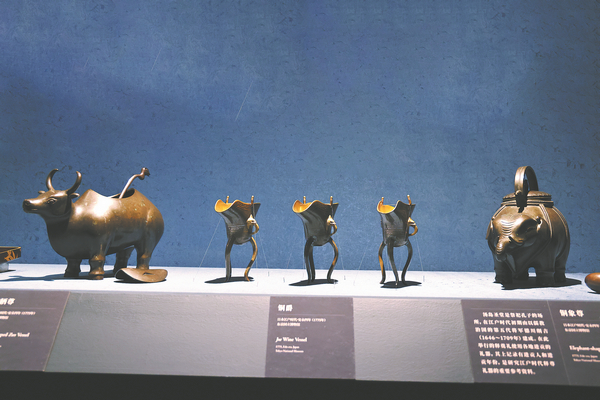

A Joseon Dynasty edition of ancient Chinese Confucian classic Zuo's Commentary on the Spring and Autumn Annals and a screen with Chinese characters promoting core values of Confucian virtues, both from the National Folk Museum of Korea in Seoul also reflect significance of Confucianism in people's daily life on the Korean Peninsula.
"To this day, the profound wisdom, ideals and moral standards of Confucian culture continue to inspire people from different civilizations around the world to understand each other and learn from each other," Wang Guangyao says.
This curator wants to create not only width, but also a long lineage in this review of Confucianism. That is why the time span of displayed relics started from a period much earlier than Confucius' time. A section of the exhibition is particularly designed for many milestone relics from Neolithic period to trace the roots of the rites and ceremonies that were admired by Confucius.
Jiahu bone flute, dating back 9,000 years, and ceremonial jade artifacts, more than 5,000 years old, may belong to different eras than Confucius', but the ritual system and shared cultural community they contributed to build may create a foundation for his school of thought.
"Confucius' philosophies didn't suddenly pop out," Wang Guangyao explains. "These relics reflect our ancestors' concern for virtues and order, and they explain how a united China chose Confucianism as a guiding mindset in national governance."
Contact the writer at wangkaihao@chinadaily.com.cn